This article was medically reviewed by Lacy Windham, MD. Lacy Windham, MD, is a Board-Certified Obstetrician & Gynecologist in Cleveland, Tennessee. Dr. Windham attended medical school at the University of Tennessee Health Science Center in Memphis. Her residency was completed at Eastern Virginia Medical School in Norfolk, Virginia. She was the recipient of multiple awards during her residency training, including Most Outstanding Resident in Maternal Fetal Medicine, Most Outstanding Resident in Oncology, Most Outstanding Resident Overall, and Special Award in Minimally Invasive Surgery.
There are 9 references cited in this article, which can be found at the bottom of the page.
wikiHow marks an article as reader-approved once it receives enough positive feedback. In this case, several readers have written to tell us that this article was helpful to them, earning it our reader-approved status.
This article has been viewed 689,513 times.
Condoms have been used since the late 16th century to avoid unwanted pregnancies and sexually transmitted infections or diseases (STIs or STDs). However, condoms are subject to deterioration, damage, and wear and tear that can reduce their effectiveness. If you want to know how to check a condom to ensure safer sex, follow these steps.
Steps
Starting Out Right
-
1Check the expiration date on the box at the store. Look before you buy to make sure that the condoms you're about to purchase haven't expired. Do not purchase or use expire condoms.
- Expiration dates should have a month and year.
- Expired condoms weaken over time and may easily break. Do not use an expired condom.
-
2Store the condoms properly. Keep your condoms in a cool, dry place, away from heat and sunshine. Also, don't shove them in your wallet where they can be crumpled and bent.[1]
- Never place condoms in the back pocket of your pants. Sitting on condoms may damage them.
-
3Keep condoms out of the glove compartment of your car. The temperature in your car may range from hot, to cold, to humid and this can cause damage to condoms.
-
4Use a new condom each time. Never reuse a condom. Repeated use can cause breakage and leftover bodily fluids may also leak out.[2] Throw away the condom after you use it and get a new one the next time you need one.
Inspecting The Goods
-
1Check the expiration date of the individually wrapped condom. Even if you purchased the condoms recently, check the expiration date before you use one. If the condom has expired, then do not use it. An expired condom is more likely to break than one that is in date.
-
2Look at the condition of the packaging. There should be no tears or holes in the package. If there is a hole in the wrapper, the condom may have dried out, rendering it ineffective and likely to break.[3]
-
3Press on the wrapper. You should feel a little bit of air resistance from inside the package. This means the package has not been torn or punctured and your condom is good to go.[4]
-
4Squish and slide the wrapper to the side. While still pressing on the wrapper, gently push it the condom inside for a side-slide motion. This slight movement indicates that the lubricant inside has not dried out and, as long as the expiry date has not been passed, is still good.[5]
- This slide test only works for lubricated condoms. Unlubricated condoms will not slide in the package but you can still do the air resistance test.
- A dried out condom will weaken, crack, and break, exposing you to your partner's fluids, potential pregnancy and sexually transmitted infections.
Keeping That Condom Safe as You Put it On
-
1Do not use your teeth. Opening a package with your teeth might be convenient, but tiny rips in the condom can happen that you might not notice before you put it on.[6] Instead, tear open the wrapper by pulling apart the premade notch on one of the corners.
-
2Keep the package away from sharp objects. Never use scissors, knives, or other sharp objects to open the package or you may accidentally puncture the condom.
-
3Feel the condom. If it feels dry, stiff, or extra sticky when it comes out of the package, it might not have been stored properly. Discard a dry, sticky, and/or stiff condom and get a new one.[7]
-
4Remove jewelry if it is in the way. Rings and genital piercings can tear a condom, so you may want to remove them before putting on a condom. Also, be careful when putting on a condom if you have sharp nails.[8]
-
5Pinch the tip. Make sure you have squeezed the air out of the tip. Air in the tip of the condom can cause it to burst open and break during use.
- Squeeze the tip between your forefinger and thumb while you roll the rest of the condom down the penis.
-
6Check your fit. There are a couple of reasons why you need to make sure you have the right sized condom. Your condom should be neither too small nor too big and shouldn't roll back up from the base once you have it on an erect penis. Measure your erect penis to ensure you buy the right size - it might take a few tries to make sure you have the best fit.
- You need to have room at the tip to catch the semen. That tip that you pinched to squeeze out the air so the condom wouldn't burst has to have room for ejaculate. If you don't have space at the tip, the condom could burst, leaving you and your partner at risk for STIs and pregnancy.
- The condom can't be too loose so as to move around. A loose-fitting condom allows for movement of fluids or could fall off all together, again putting you and your partner at risk.
- Measure for fit at home before you buy.[9]
- Be realistic; don't go for image. “Small” and “large” sizes have more to do with width than length but you can also get shorter or longer condoms, so practice safer sex and choose wisely.
-
7Use a water-based lubricant. Oil-based lubricants can weaken the condom and make it break.[10] Choose a water-based lubricant instead.
- Don't use oil-based lubricants, baby oil, massage lotion, petroleum jelly, or hand cream as a lubricant.
Warnings
- Condoms may not protect you against HPV (human papilloma virus), so you may want to consider getting vaccinated since this is such a common STD.[13]⧼thumbs_response⧽
- Do not fill a condom with water or air to test it, either before or after use. Filling it with water or air before use can puncture the condom. If you fill it with water after use, you are unnecessarily exposing yourself to your partner's fluids.[14]⧼thumbs_response⧽
References
- ↑ http://kidshealth.org/teen/expert/birth_control/condom_check.html
- ↑ http://kidshealth.org/PageManager.jsp?dn=KidsHealth&lic=1&ps=207&cat_id=20018&article_set=23020
- ↑ http://bedsider.org/questions/306-how-do-i-check-a-condom-wrapper-for-damage
- ↑ http://bedsider.org/questions/306-how-do-i-check-a-condom-wrapper-for-damage
- ↑ http://bedsider.org/questions/306-how-do-i-check-a-condom-wrapper-for-damage
- ↑ http://www.avert.org/teens-condom-tips.htm
- ↑ http://kidshealth.org/teen/expert/birth_control/condom_check.html
- ↑ http://kidshealth.org/teen/sexual_health/contraception/condom_tore.html
- ↑ http://learn.condomdepot.com/condom-size-chart/
About This Article
To check a condom is safe to use, start by looking at the wrapper to make sure it’s still within its expiration date, since out-of-date condoms will break more easily. After checking the expiration date, examine the wrapper to ensure there are no holes or tears, which would also make the condom unsafe. When you’ve taken it out of its wrapper, feel the condom to make sure it’s not dry, stiff, or sticky, which are signs that the condom has been damaged. You should also use the right size, as a condom that’s too big or small won’t be as effective. Once you’ve put the condom on, make sure there’s no air in the tip, which can cause it to burst open during sex. For more tips from our Medical co-author, including how to put a condom on safely, read on!

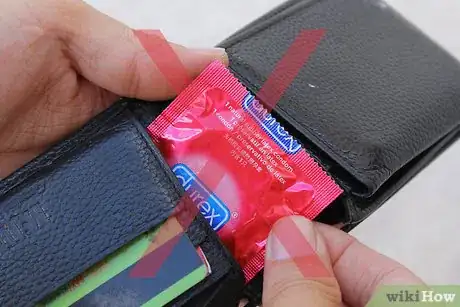
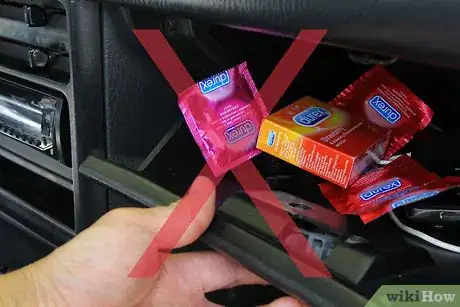
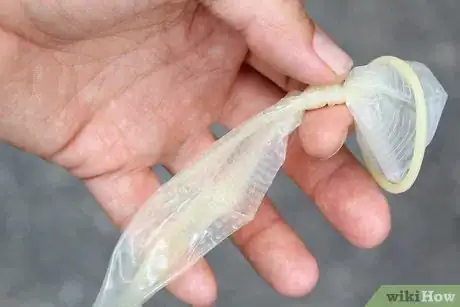
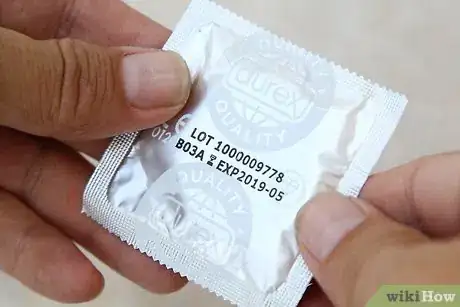

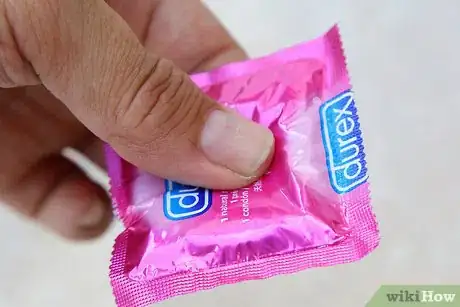

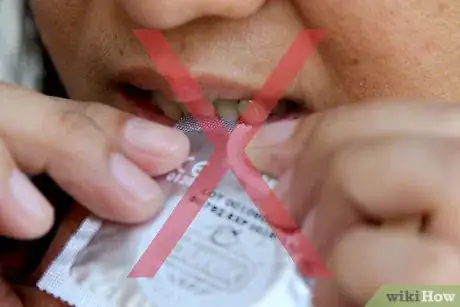
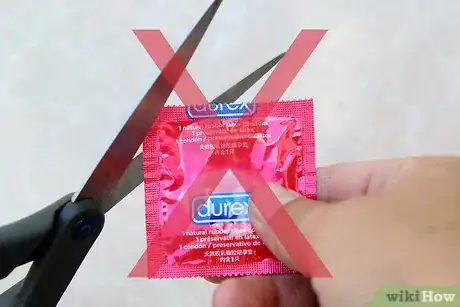
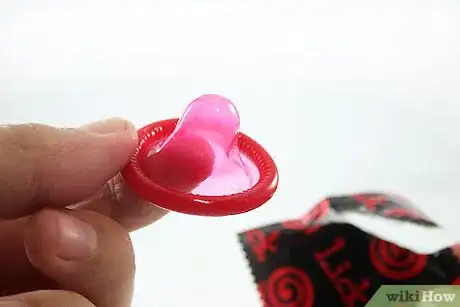
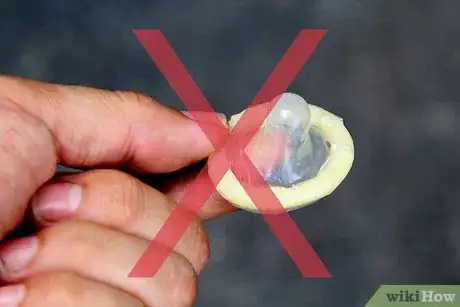
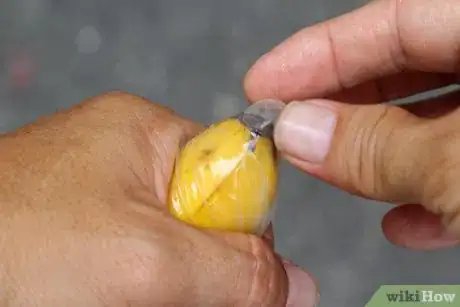

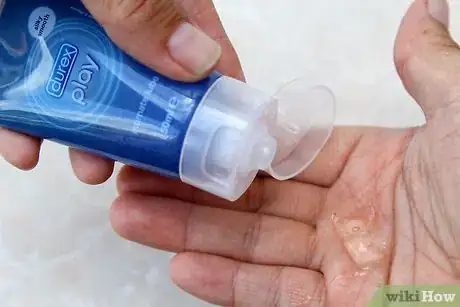

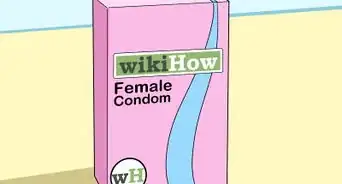

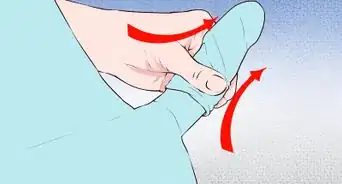




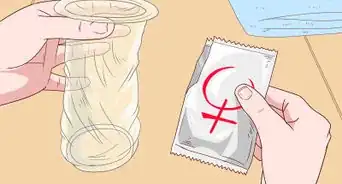



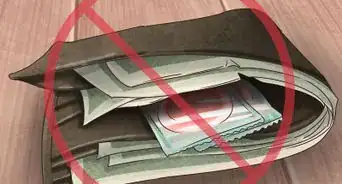










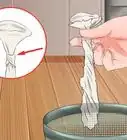
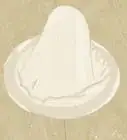
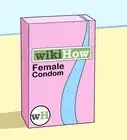
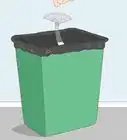



































Medical Disclaimer
The content of this article is not intended to be a substitute for professional medical advice, examination, diagnosis, or treatment. You should always contact your doctor or other qualified healthcare professional before starting, changing, or stopping any kind of health treatment.
Read More...